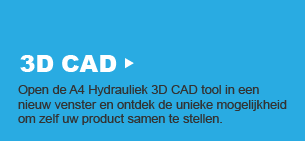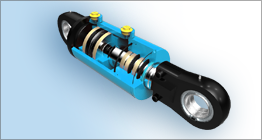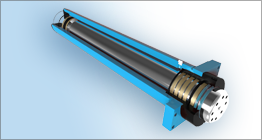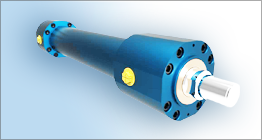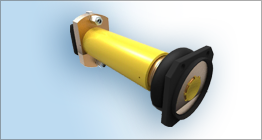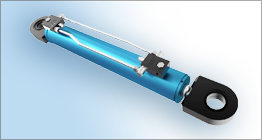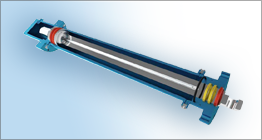A closed circuit flushing valve (also called a transmission valve or replenishing valve or purge valve) usually comprises a pilot operated directional valve and a low pressure relief valve.
When the hydrostatic transmission is in neutral, the directional valve is centered and the gallery to the low pressure relief valve is blocked.
When the transmission is operated in either forward or reverse, the high pressure side of the loop pilots the directional valve. This opens the low pressure side of the loop to the relief valve gallery.
In a closed circuit, fluid from the motor outlet flows directly to the pump inlet. This means that apart from losses through internal leakage, which are made up by the charge pump, the same fluid circulates continuously between pump and motor. If the transmission is heavily loaded, the fluid circulating in the loop can overheat.
The function of the flushing valve is to positively exchange the fluid in the loop with that in the reservoir.
When the hydrostatic transmission is in neutral, the flushing valve has no function and charge pressure is controlled by the charge relief valve in the transmission pump.
When the transmission is operated in either forward or reverse, the flushing valve operates so that charge pressure in the low pressure side of the loop is controlled by the relief valve incorporated in the flushing valve. This relief valve is set around 30 psi lower than the charge pump relief valve located in the transmission pump.
The effect of this is that cool fluid drawn from the reservoir by the charge pump, charges the low pressure side of the loop through the check valve located close to the transmission pump inlet. The volume of hot fluid leaving the motor outlet, that is not required to maintain charge pressure in the low pressure side of the loop, vents across the flushing valve relief and back to tank, often via the motor and/or pump case.
So if a flushing valve is fitted to a transmission, it acts as the charge pump relief valve once the transmission is operated in forward or reverse. So if the flushing valve vents into the case of the motor, then it is possible to determine the condition of the pump by measuring its case drain flow, but not the motor.
If the flushing valve vents into the case of pump, then it is possible to determine the condition of the motor by measuring its case drain flow, but not the pump.
This reinforces the point that using case drain flows to determine the condition of the components of a hydrostatic transmission, without a thorough understanding of the circuit in question, can result in incorrect conclusions and the costly change-out of serviceable components.
By Brendan Casey
.jpg)











